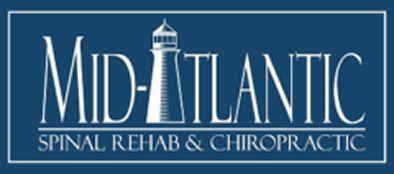What is Maximum Medical Improvement?
As my avid blog readers (and I know you are out there) are already aware, I am a Baltimore Chiropractor. I own two clinics in Baltimore, located in Southeast Baltimore (Fells Point) and Northwest Baltimore (Upper Park Heights). We focus on taking care of anyone with spinal pain. That includes athletes, students, couch potatoes and really anyone else. As the clinics grow we continue to see more Baltimore auto accident patients. I like to focus each of my blog posts about an issue dealing with Baltimore auto accidents since it is a subject that I find particularly interesting and it impacts me and my providers every day.
When someone gets injured in a Baltimore auto accident, they typically present with a series of symptoms that include but are not limited to, headaches, neck pain, back pain, numbness and tingling down an arm, numbness and tingling down a leg, shoulder pain, and concussions. Just about any body part, under the right circumstances, could become injured following a Baltimore auto accident injury. Our job as treating providers at Mid-Atlantic Spinal Rehab & Chiropractic is to figure out exactly what pain and injuries were caused by the crash and then to rehab the patient until those symptoms and pain resolve.
That brings me to the subject of the blog post, Maximum Medical Improvement, or MMI. The definition of MMI is having a patient’s subjective and objective complaints return to the level of pain that they were experiencing prior to their injury. It also means that if you can not do that, that you have exhausted all methods within the scope of your practice to do so. In the cases where there are permanent injuries, patients must be discharged/released from care once it is clear that their treating providers can not continue to heal or improve the patient.
I am going to offer up a few examples below to demonstrate what MMI is.
A) A patient was a normal healthy 21 year old college student. He got rear-ended and developed neck and back pain. He did a “routine” course of chiropractic care with physical therapy and modalities and after about eight weeks all of his symptoms resolved. He resumed all of his normal activities and he was discharged as being pain free with no residual symptoms. In this case, the patient reached MMI in 8 weeks. He had no pain or issues prior to the crash and was discharged once he again reached that level of discomfort (which was becoming pain-free again).
B) A patient has chronic back pain from a football injury in college. They usually get a low level of pain in their lower back (4/10) and they experience this pain about the half the week (3-4 days are good and then 3-4 days are bad). They already have medical providers such as pain doctors or orthopedists that they follow up with to manage their chronic pain.
This patient who is different from the example above gets involved in a Baltimore auto accident as in the example above. Now the definition for MMI is different for this patient. Our goal is to get this patient back to their PRE-EXISTING condition. For him, that is mild-to-moderate lower back pain about half the week. It is NOT getting them to zero pain, given that they presented with back pain. In this instance the Baltimore auto accident aggravated or “flared up” their condition and our obligation is to get their condition back to where it was before the crash. Once the patient’s condition is back to where it was, we release them at MMI.
C) In the example above let’s look at that patient again. What if we were never able to get that patient back to where they were prior to the crash? What if they were ejected from the vehicle and now have a surgical back condition that chiropractic care and physical therapy will not help? What if despite our help they now have daily constant back pain at a 9/10 and none of our treatment can help reduce the pain any further after a reasonable course of care? That has happened before. We would still release that patient at MMI in this example because they will have a condition that therapy in this office can not realistically get back to “pre-injury” status.
So the big question is why does any of this matter?
The answer is simple. When a patient is injured their insurance companies (either their first party PIP carriers or the adverse insurance driver who struck them and is responsible for paying for the injuries) have agreed to contractually ONLY pay for injuries that are related to an accident. That means that they will pay for the treatment of these patients only until they have reached MMI. They will discontinue payment for treatment once MMI has been reached. That is why providers such as medical doctors, orthopedists, chiropractors, and physical therapists need to concern ourselves with what MMI is when a patient has reached MMI with our care.
If you, or someone you know, has been injured in a Baltimore auto accident, please contact Mid-Atlantic Spinal Rehab & Chiropractic. We now have 2 convenient locations to better serve your injury needs.
Dr. Gulitz
